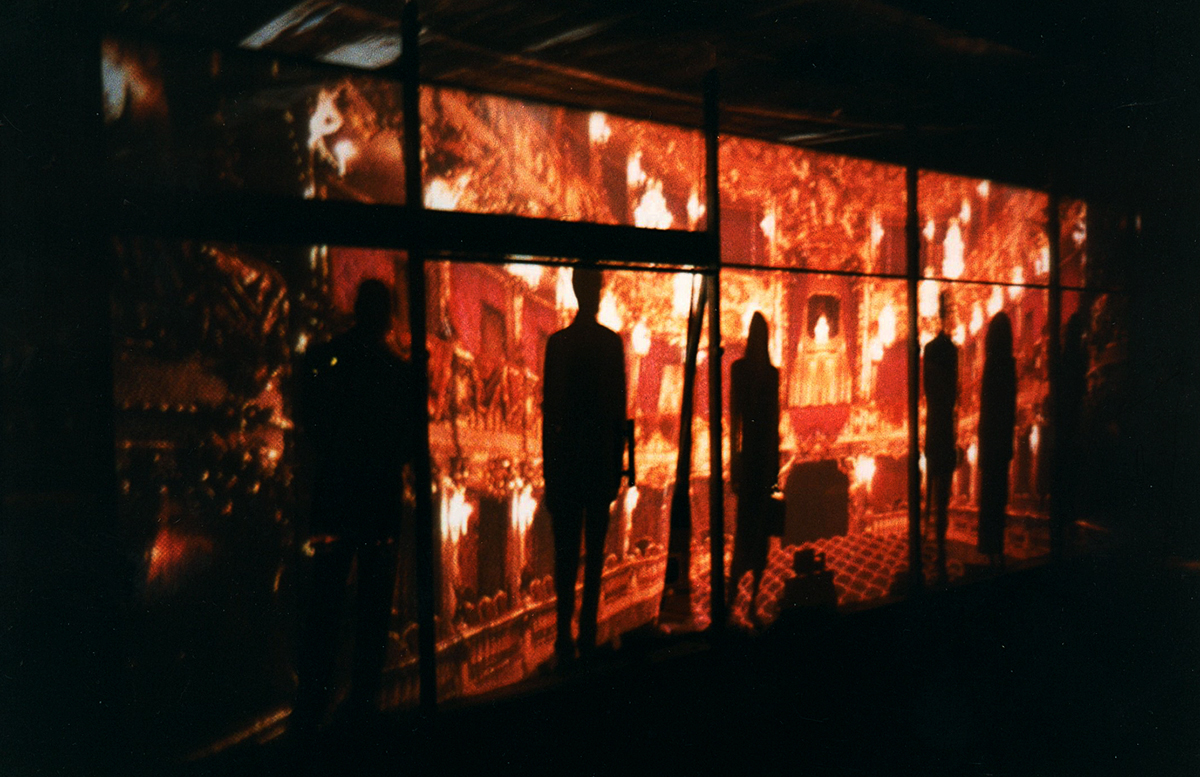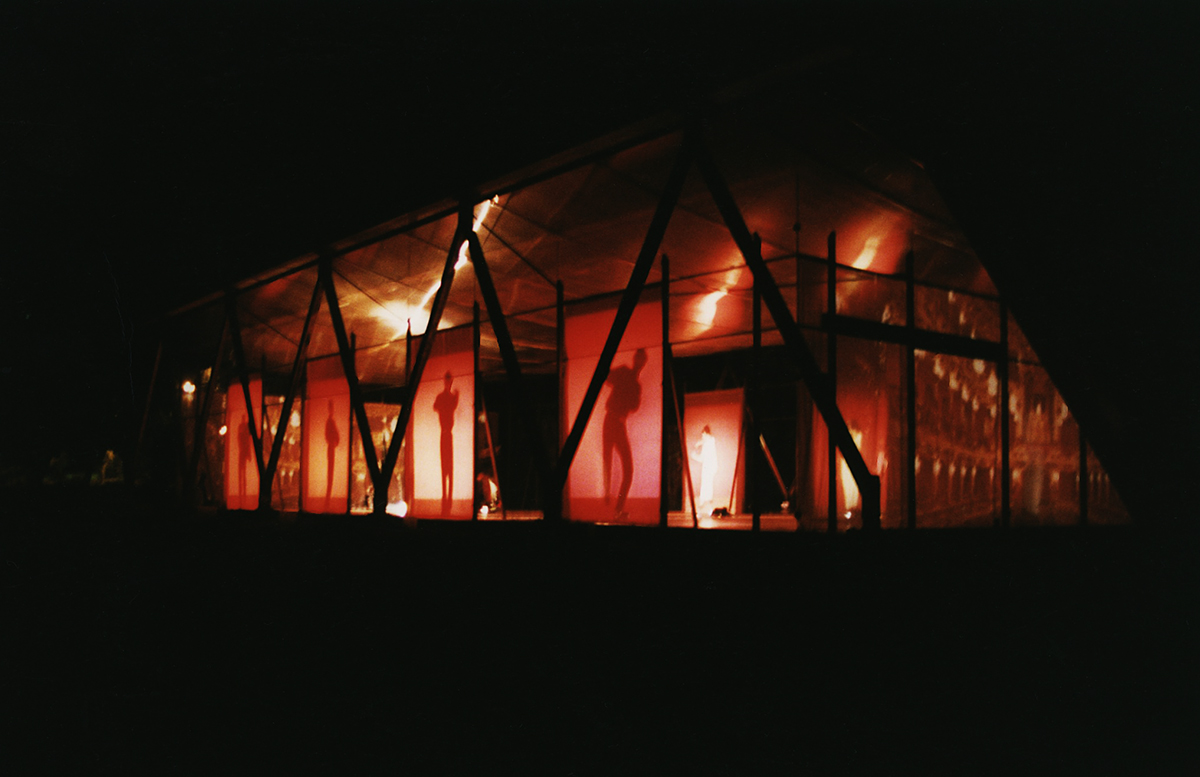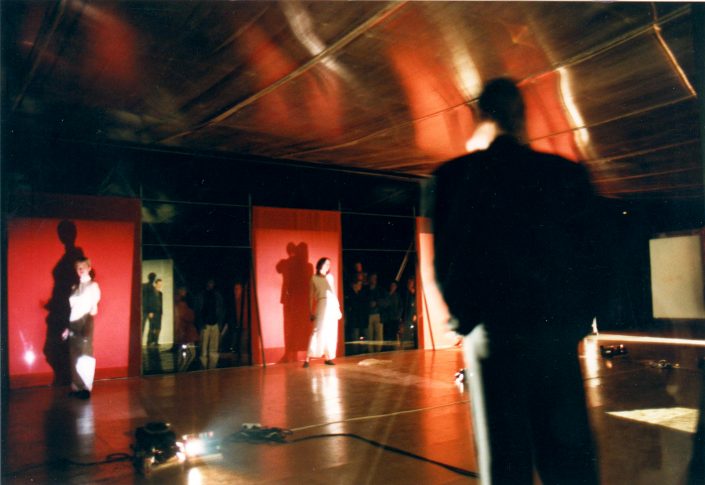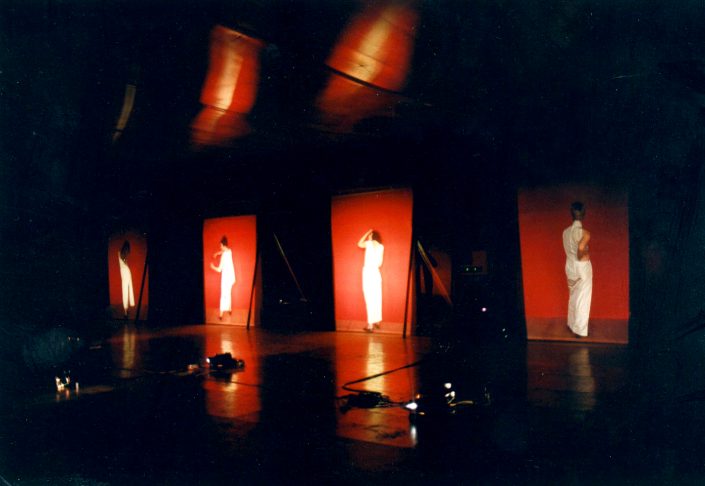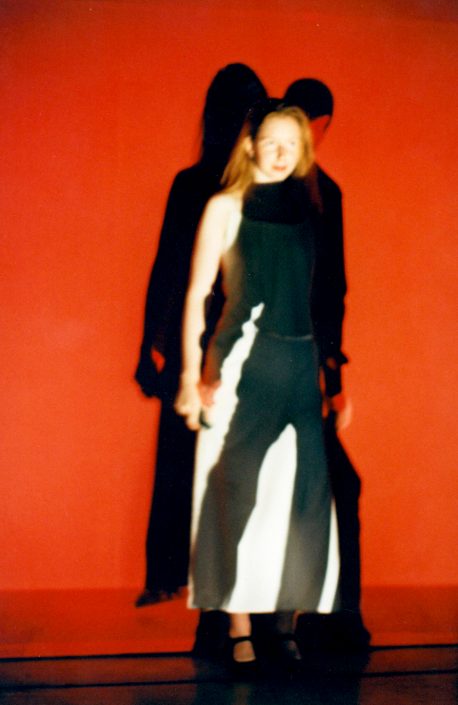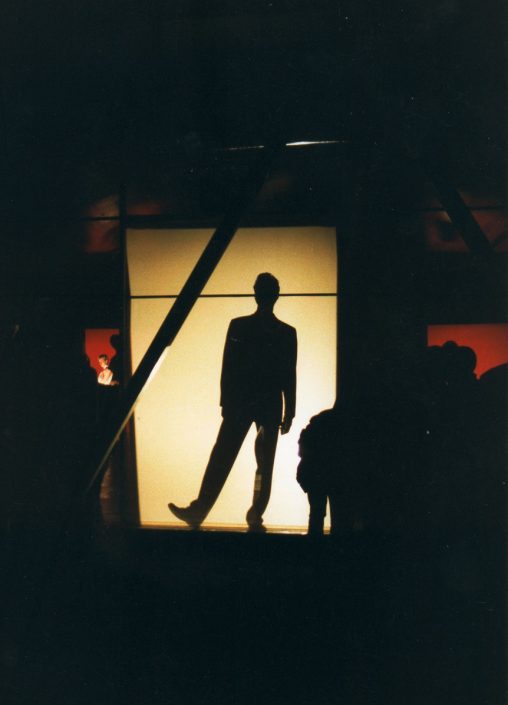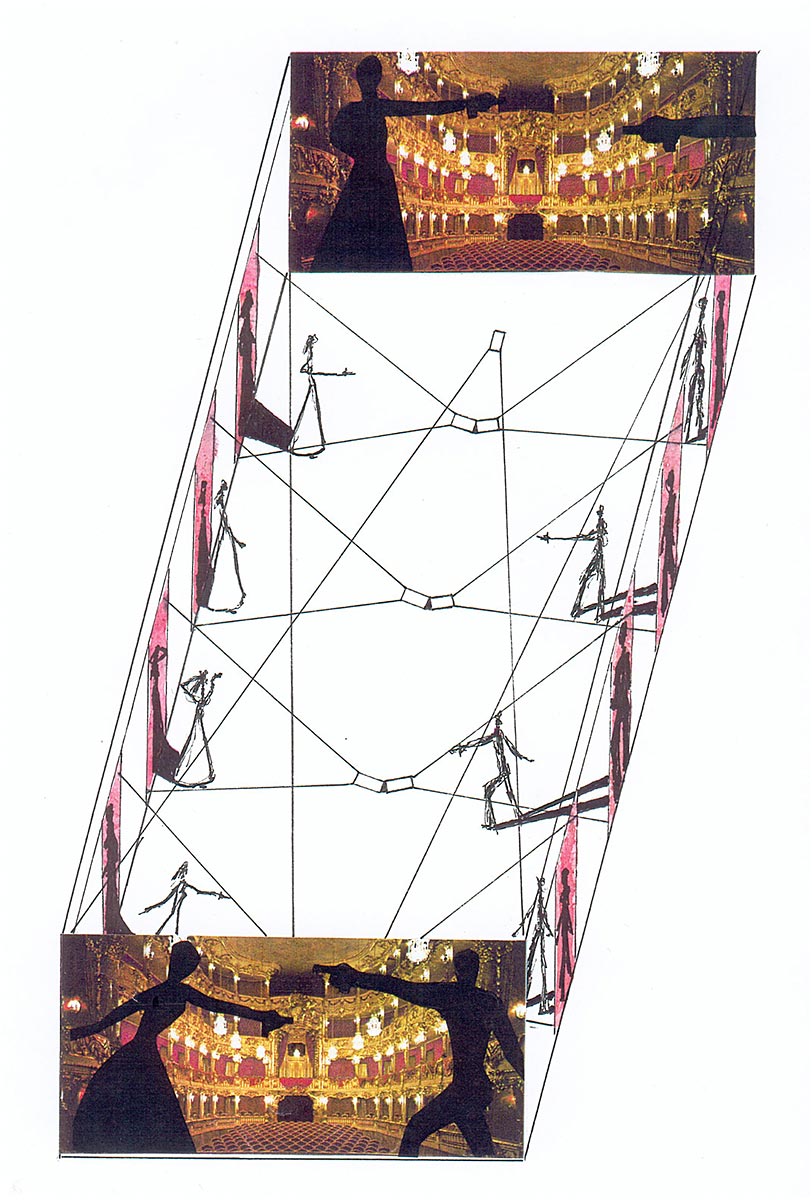Small talk
Performance-installation in the Wewerka Pavillon for the exhibition Skulptur – Projekte 97
This project in the Wewerka-Pavillon required Constanze Unger to turn the pavilion into an opulent Baroque theatre first, which, however, appeared as a light projection on the frontal window panes only. On the stage inside, a matching action evolved as a ritualized interplay of four female and four male players: a duel of the sexes between couples, including remote control, light rays, shadows and projections of images of the body, sensual and combative, physical and immaterial at the same time. A fusion of the sexes was implemented via projection, as a synthesis of technically reproduced illusory images and real action. At the click of a button, the lascivious movements of a partner were overlaid and stopped by a projection of a slide of one’s own person. The reversal of the situation happened simultaneously, as the actor himself was suddenly engulfed in the stage light, which invited to the erotic dance. A dance of projections ensued, where the technical (slide) projection receded in favour of images of deeply human desire, longing and phantasies of power.
from: Martin Henatsch, Der Wewerka- Pavillon – Schutzraum für Kunst im öffentlichen Raum, in Wewerka-Pavillon ’97, Kunstakademie Münster
Small talk
Performance-Installation im Wewerka Pavillon im Rahmen der Skulptur – Projekte 97
Für ihre Aktion im Wewerka-Pavillon verwandelte Constanze Unger diesen zunächst in ein opulentes barockes Theater, das jedoch lediglich als lichte Projektion auf den Frontscheiben erschien.Passend dazu entstand auf der Bühne im Inneren ein gezielt ritualisiertes Wechselspiel zwischen je vier weiblichen und männlichen Akteuren:ein Geschlechterduell der Paare mit Fernbedienung, Lichtstrahlen, Schatten und projizierten Körperbildern.sinnlich und kämpferisch, körperhaft und körperlos zugleich. Eine via Projektion umgesetzte Verschmelzung der Geschlechter als Synthese von technisch produzierten Scheinbildern und realer Aktion. Per Knopfdruck wurden die lasziven Bewegungen des Partners von dem Lichtbild der eigenen Person überlagert und zum Stillstand gebracht. Gleichzeitig die Umkehrung der Situation, der Akteur stand nun selbst im gleißenden Rampenlicht, das zu erotischem Tanz aufforderte. Es entwickelte sich ein Tanz der Projektionen, in denen nicht die technische (Dia-)Projektion, sondern zutiefst menschliche Wunschbilder, Sehnsüchte und Machtphantasien im Vordergrund standen.
aus: Martin Henatsch, Der Wewerka- Pavillon – Schutzraum für Kunst im öffentlichen Raum, in Wewerka-Pavillon ’97, Kunstakademie Münster


